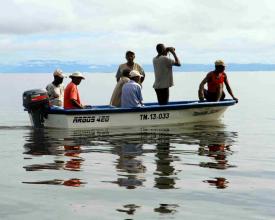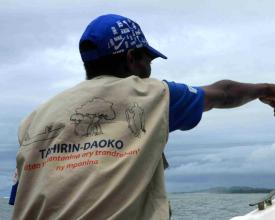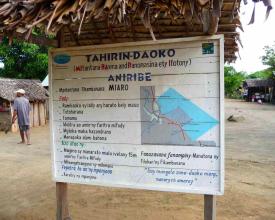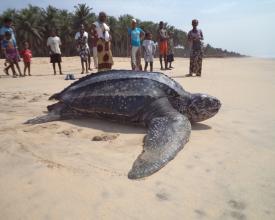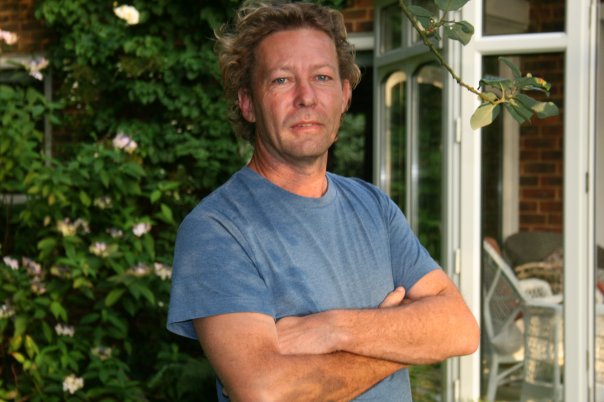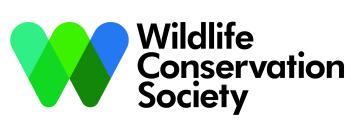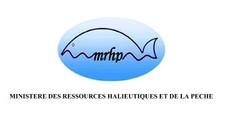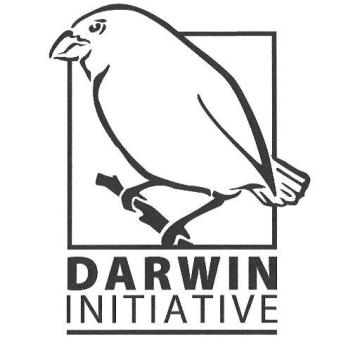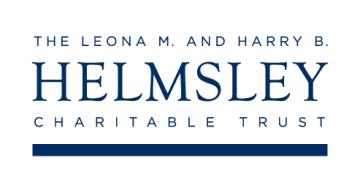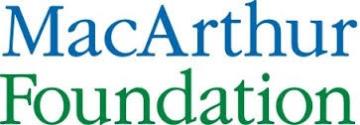Empowering local communities to manage small-scale fisheries
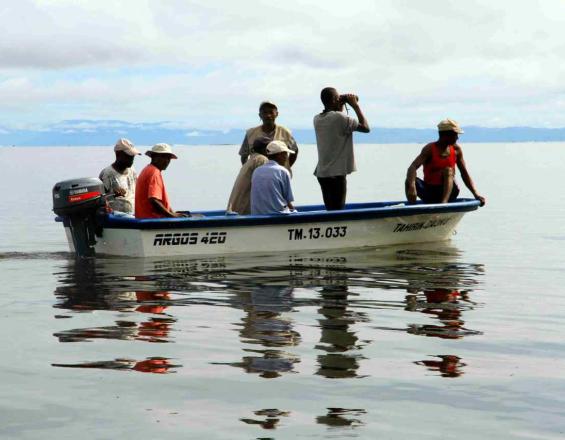
This solution adopts a dual bottom-up / top-down approach to local marine resource management in a network of 26 marine reserves. It developed a seascape-scale coastal fisheries co-management plan providing formal national recognition for local fishers’ rights, and customary social conventions (dina) between fisher communities. Fishers were resourced to enforce regulations and the dina to increase their role in marine resource management, and compensate for under-resourced Government agencies.
Context
Challenges addressed
- Lacking sense of ownership & legal recognition
- 100,000 predominantly poor, rural people, rely on the rich waters of Antongil Bay to sustain their livelihoods
- Overexploitation due to increasing human population, destructive fishing practices, and lack of compliance with fishing gear restrictions are driving degradation of coastal habitat and fisheries, plus loss of coral reefs and declines in fish and invertebrates.
Location
Process
Summary of the process
The management plan (BB 1) provides the national level framework and is essential to legitimize the communities’ roles and responsibilities in the eyes of decision makers in Government. This also generates pride and responsibility in local communities who understood that their role in natural resource management is taken seriously. In addition, it provides long-term sustainability to the overall structure of community rights by enshrining them in national legislation. The dinabe (BB 2) is a bottom up, local process aiming to build community ownership and comprehension related to sustainable resources use. It is an important complement as it is understood by communities and has legitimacy in their eyes. It also sends a signal to the Government of the engagement of local communities and their willingness for a management and decision making role. Control and Surveillance Committees (BB 3) represent an essential supporting pillar and provide for a simple, responsive, and proximate enforcement mechanism that builds on the important role of local communities as having the primary responsibility. Without this enforcement, the management and dinas would simply be reports on a shelf that had legal recognition but without any real value.
Building Blocks
Antongil Bay Fisheries Co-Management Plan (ABFMP)
The Antongil Bay Fisheries Co-Management Plan (ABFMP) is a national level legal framework to recognize local community management rights. It was developed through significant collaborative efforts between WCS, resources users, and Government. The result was the first seascape scale traditional, artisanal and industrial fisheries co-management plan in Madagascar covering 3,746 km2 of marine habitats that officially confers fisheries management authority to local communities. The plan acknowledges the role of Antongil Bay marine reserves for resource recovery, and fixes maximum levels for traditional, artisanal and industrial fishing efforts. The decree adopting the ABFMP grants the fishermen’s associations the rights to develop regulations adapted to the local context, identify and implement practical measures to ensure respect of regulations, register and issue licenses to local fishers, and establish and enforce different zones within the local managed fishing areas. Local fisher associations are officially accountable for the implementation of ABFMP and they actively participate in inspection, surveillance and monitoring activities.
Enabling factors
- Significant stakeholder consultation over a long period (108 meetings, 6 workshops, 1466 participants over 7 months)
- Simultaneous efforts to increase the awareness of local communities in relation to the social, economic and conservation value of marine resources and ecosystem functioning so that they have information to actively participate in debates and discussions
- Facilitation of cooperation between stakeholders at different levels by establishment of a multi-partner association (PCDDBA) to provide a platform for exchange and discussion
Lesson learned
- It is essential to ensure that all actors in the process have the same and equal levels of information and in particular that the local community has the capacity to be actively engaged
- There is a need to plan resources for accompaniment of the process over the long term to as to be able to absorb inevitable delays and still see the process to the end
- There is a need to manage community and Government expectations about the timing for the generation of positive results from the implementation of such a process
- Careful facilitation of the process is needed to overcome traditional and cultural barriers that create obstacles for full involvement by marginal groups (poor households, local fishers, women, youth etc.)
The Dinabe: A social convention between local communities
The dina is a traditional social convention that helps regulate life in Madagascar communities. It enables local communities to develop a set of rules and regulations to govern a particular set of circumstances and is commonly used in relation to natural resource management. Dinas are developed in a participatory manner and given legal weight through their homologation in local courts. Their enforcement lies with the local community. In the case of Antongil Bay, 26 dinas were created – one for each fishers association in each locally managed marine reserve. The dinas encompass:
- a set of regulations for the principal infractions (destructive gear, fish minimum size, etc.),
- a set of regulations in accordance with the local context (taboos, night fishing regulations, etc.), and
- a set of sanctions.
In addition to the local dinas, the local communities of the 26 marine reserves agreed to create a “dinabe”, which aims to federate the individual dinas and provides an overall framework for sustainable use of the marine resources and coastal areas in the bay in a complementary manner to the Bay-wide management plan.
Enabling factors
- A process of information dissemination and education was essential to ensure communities had the knowledge necessary to make decisions about the content of the dinas.
- While maintaining community leadership of the process, the involvement from the outset of the Government was important to minimize the risk that obstacles are encountered later in the process.
- Legal recognition of the social conventions is essential for their legitimacy in both the eyes of the community and the Government.
Lesson learned
- While difficult to achieve due to a lack of a recognized spokesperson, the involvement of migrant or external fishers in the process of elaboration of the Bay-wide management plan (which establishes the principles of exclusive fishing rights for local communities) would have helped to mitigate their negative influence on the homologation process of the dinabe.
- Not all parties are going to be supportive of local management of fishing rights and unexpected situations or opposition can arise – as was the case with a group of external fishers who blocked homologation of the final dinabe.
- The relationships built during the process between all stakeholders are an equally important outcome as the management plan and dinabe and provide a strong base on which to overcome problems. The management plan and dinabe development process created a network of partners that did not previously exist and is now working together to resolve the issue of homologation of the dinabe.
Control and Surveillance Committee (CCS)
With the support of WCS and under the guidance of the Government fisheries enforcement agency, each association has set up a local Control and Surveillance Committee (CCS) that is made up of volunteer community rangers, who are officially recognized by the Government and provided with a registered, numbered identification badge. The CCS allows the application and enforcement of the rules and regulations set out in both the management plan and the dinas. Rangers are equipped and trained to carry out surveillance and enforcement missions and given focused training on: knowledge of regulations; awareness raising methods; dissuasion/sanctions; repression; registration of offenses; and definition of strategies and organization for surveillance and control missions. Rangers come from a range of social backgrounds and include men & women, village chiefs, traditional & religious authorities, private sector operators, school teachers, and fishermen. The CCS carry out missions according to varying schedules and depending on the circumstances with joint patrols by several associations to cover larger areas or joint missions of CCS rangers and Government fisheries enforcement representatives when significant infractions are observed.
Enabling factors
- Willingness of Government to formally transfer certain enforcement responsibilities to communities and to formally recognize the role of local communities.
- In the initial stages, a technical and financial partner that can provide substantial external support for the establishment, piloting and initial implementation of systems.
- Communities willing to play the role of enforcer and understand the benefits that will result.
Lesson learned
It is necessary to consider the longer term funding and put in place systems for financial sustainability from the outset of project develop. In the same way it is important to plan for technical autonomy for CCSs so that there can be a progressive withdrawing of technical partners. Such community led systems have many positive aspects – proximity, flexibility, engagement etc. – but it is important to ensure that they are not developed in a manner that attempts to duplicate or replace the regulatory role of the Government. This is particularly true in situations such as Madagascar where Government agents are significantly under-resourced and are largely absent from regular field based enforcement activities. From a practical point of view uniforms and badges are extremely important to give the rangers an elevated status in communities so that they are respected and to encourage others to join the CCS.
Impacts
A key success of the joint efforts of resource users, WCS and Government was the outlawing of beach seining by the Government in 2006. Analanjirofo Region, incl. Antongil Bay, is the only place in Madagascar where these destructive fishing gears are prohibited by law. As a result of temporary fisheries closures and enforcement of laws regulating fishing gear, local community members noted an increase in catch per unit effort; increase in size of fish caught; increase in abundance of juvenile; reappearance of some species; gradual restoration of habitats; increase in local capacity to manage their resources; improved relations between local communities and local authorities; decrease in the use of beach seines; and an increase in economic revenue from fishing. Monitoring indicated a tenfold increase in finfish biomass between 2013 and 2015 in the restricted areas, while finfish biomass in the no-take zones of the LMMAs doubled in the same period. The management plan also legally establishes Madagascar’s first shark sanctuary in Antongil Bay, an important habitat area for sharks with at least 19 species present that are known to be harvested, a third of which are threatened with extinction.
Beneficiaries
100,000 people from 26 Locally Managed Marine Areas (LMMAs) in Antongil Bay.
Sustainable Development Goals
Story
The locally managed marine reserves in Antongil Bay are organized into a network of 26 reserves that in turn form part of a national network of locally managed marine reserves – the MIHARI network. In October 2015 the communities around Antongil Bay had the honor of hosting over 150 members of the MIHARI network from all around the country for the annual national forum. The fisher associations in Antongil Bay were incredibly proud to demonstrate both to other local communities from around Madagascar the work that they had done and all that they had achieved through the management plan, dinas and their involvement in the CCS – which are the first of their kind in the country. The atmosphere during the weeklong forum was festive! Government officials, visitors from the Pacific where locally managed marine reserves are a well-developed management tool, local communities, youths and NGO representatives met in tents, on grass, on the sand, in village huts for formal and informal discussions on how best to advance in achieving a common goal of improved local management for marine reserves. For many in the local communities it was the first time they had had the chance to discuss directly, on an equal footing with high-level Government officials who traveled from Antananarivo (Madagascar’s capital) and their sense of pleasure that their work was being recognized at this level was overwhelming. As a direct result of some of the discussions held, the Government launched the preparation of a new national decree on locally managed marine protected areas that is currently being finalized. At the end of event, a competition for the largest octopus raised in the seasonal no-take zones of Antongil Bay was held and the winner weighed in at a whopping 6.2kg.
